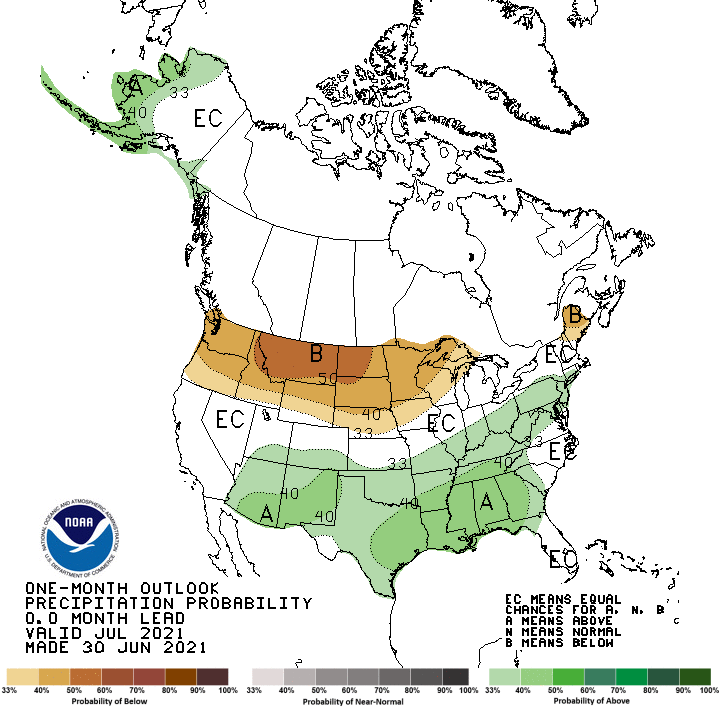Growing conditions overall for the Southeast have been relatively good so far this year. Since April 1, most of the Southeast has been a little cooler than normal, except for the Florida Peninsula. Rainfall, as usual, has been variable, but generally most areas in Alabama, southern Georgia, and northern Florida have been fairly wet, although there are a few pockets of drier conditions. For July, this pattern of cooler and wetter than normal conditions is expected to continue across a lot of the region except for the Carolinas, which are predicted to be warmer than normal and less likely to be wet. The wet conditions are expected to last through the summer and into fall, although the 3-month outlook for July through September does lean towards warmer than normal temperatures due to the long-term upward trend in temperature that is occurring across the Southeast since about 1960. With all the rain, it would not surprise me if solar radiation were also lower this year because of the clouds and higher humidity that come with the rain.
The predicted wet conditions are due at least in part to the active tropical season we are expected to have. We have already seen some rain from Tropical Storms Claudette, Danny, and Elsa in parts of the region. Hurricane Elsa formed on Friday, July 2, in the Atlantic as the earliest 5th named storm of the year on record. The last time we had a hurricane in the eastern Caribbean by mid-July was Hurricane Emily in 2005. The only other time it happened was in 1933, another extraordinarily active year. Of course, we don’t know where this year’s storms will go and how much rain they will bring, so 2021 may or not be another wet year for us. But the odds look pretty good that we won’t see a drought, and that wet conditions are more likely than dry ones this season. Because of the active pattern, you should keep a watchful eye on the forecasts before you plan any fieldwork that could be affected by heavy rains or winds from storms moving through your area.
We are currently in neutral ENSO conditions, with no La Nina or El Nino present. But La Nina is expected to return by the last quarter of 2021 and last for a few months. That could bring warmer and drier conditions to the region during the October through December period and perhaps going into 2022.
